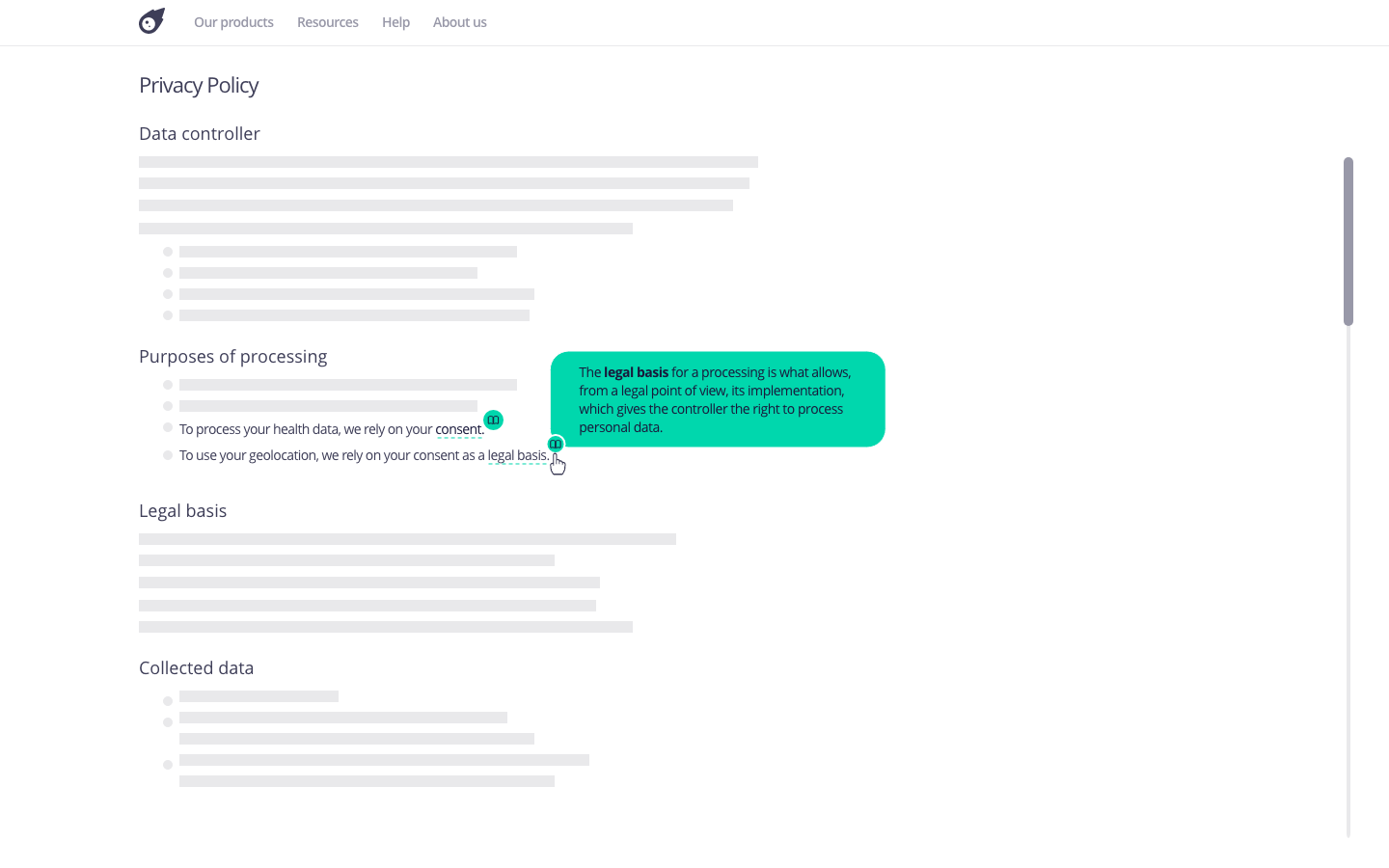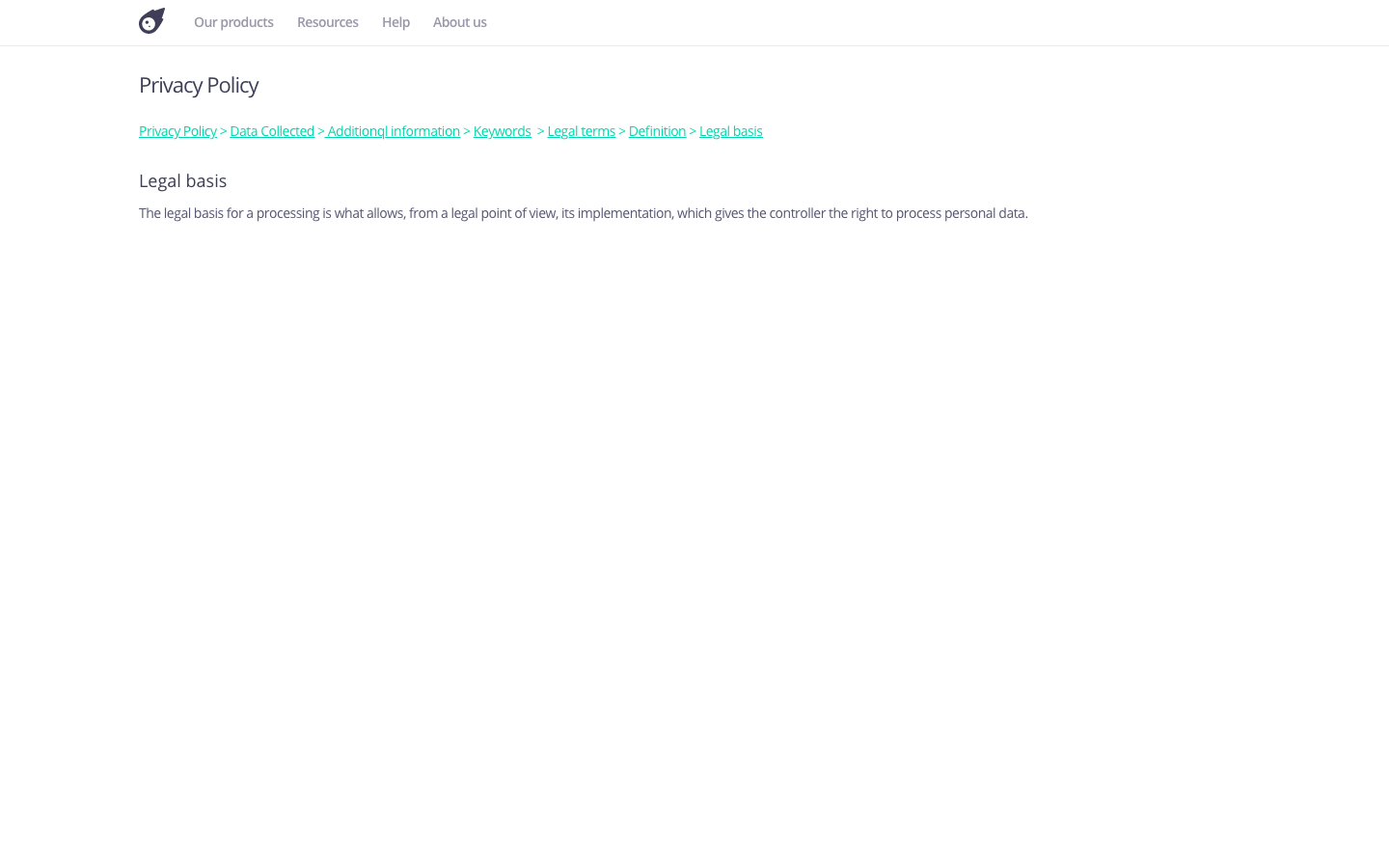Providing definitions
This design pattern is part of the LINC’s research initiative focusing on interface design. It comes from frequent proposals made by participants of the Data & Design workshops to implement the principle of transparency provided in the GDPR. It can be used and adapted to the specific context of your services and products. However, its reuse as such do not guarantee compliance with the GDPR in general and the principle of transparency in particular.
This pattern proposes to explain more complex terms by making their definition available in plain language to enable people to fully understand the information.
This pedagogical approach makes the information accessible and ensures that any jargons or complex words are understood so that the information delivered is clear and understandable.
Using the pattern in the user journey
► When signing-up: this pattern may be relevant to explain technical terms used when creating an account. For example, the term “two-factor authentication” can be introduced with a short sentence such as: “Two-factor authentication (2FA) provides an extra step at login to ensure that it is really you, even if someone knows your password. It increases the security of your account, and you can choose the method you want to authenticate yourself (SMS, email, application…)”.
► In a privacy policy: this pattern ensures that the technical and legal terms in the policy are accessible and understood by making their definitions available. Definitions can be accompanied by examples if necessary. If the definition is accessible by hovering or clicking on the terms, they should be visually highlighted to encourage people to interact with them and access the definition. Definitions can be presented in fixed inserts alongside the main text of the policy.
► In case of a problem with the data or its use: giving definitions allows people to clearly understand the reasons for the issue they might encounter and how to solve it on their own. These definitions can appear in a Q&A, for example: “What is 2FA?” or “What does pseudonymised mean?”
Tips
► Providing plain language definitions does not mean making the information more vague or general, especially when it needs to be precise under the GDPR. On the contrary, plain language definitions should make the concept clearer for non-specialist audiences.
► It is important to think about the ease of access to definitions, both on computers and on mobile phones, as well as their clarity. It is therefore necessary to think about how to insert these elements into the information.
► If definitions are not embedded in the text and there is a need to interact with the defined term to bring up the definition, as a second level of information, the need for interaction should be clearly visible and understood by the person. Care should be taken to ensure that these interactions are not confused with other types of elements, such as navigation links. This can be done through underlining, highlighting or an icon.
Examples
Possible approach

Possible approach

Attention point

Attention point





